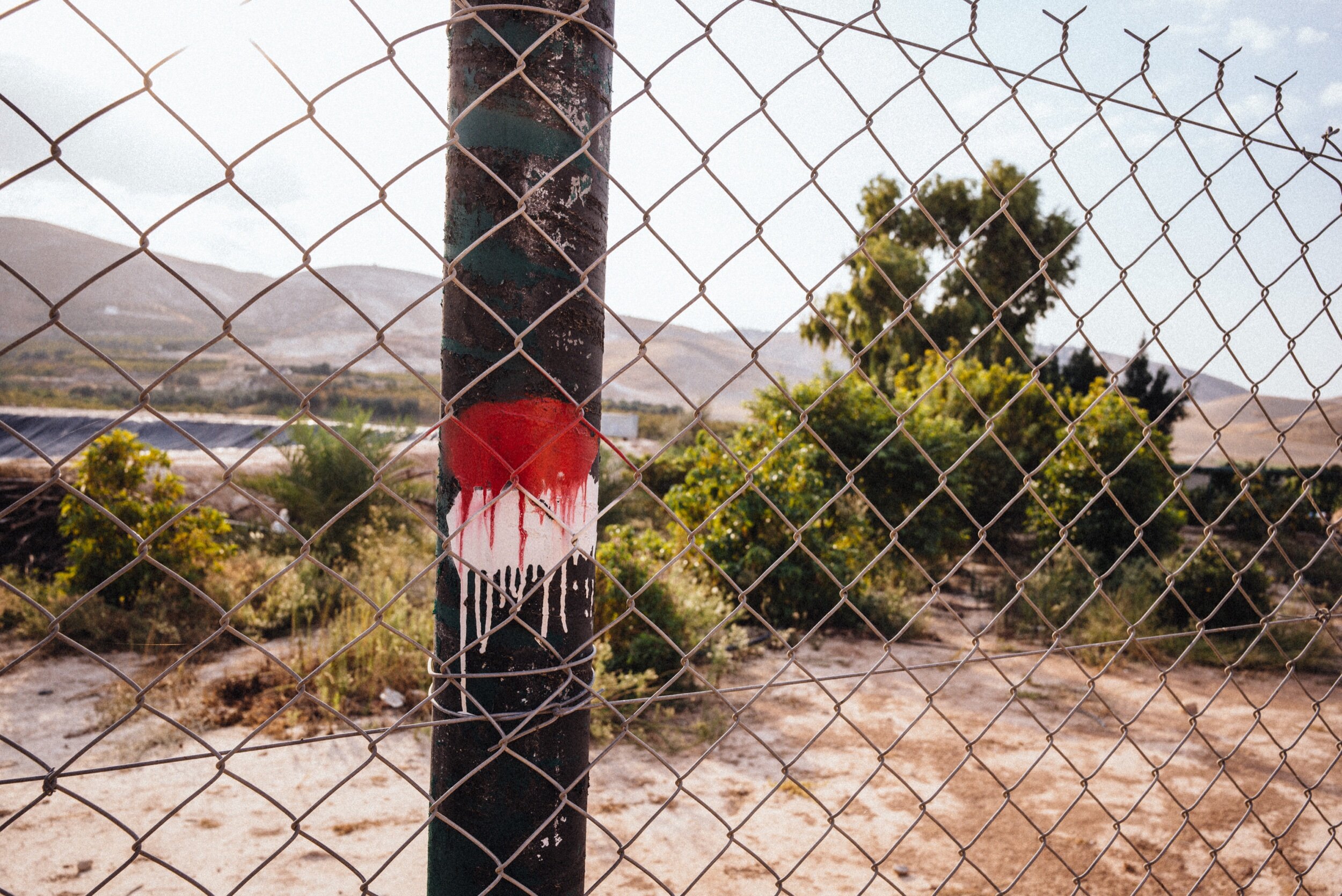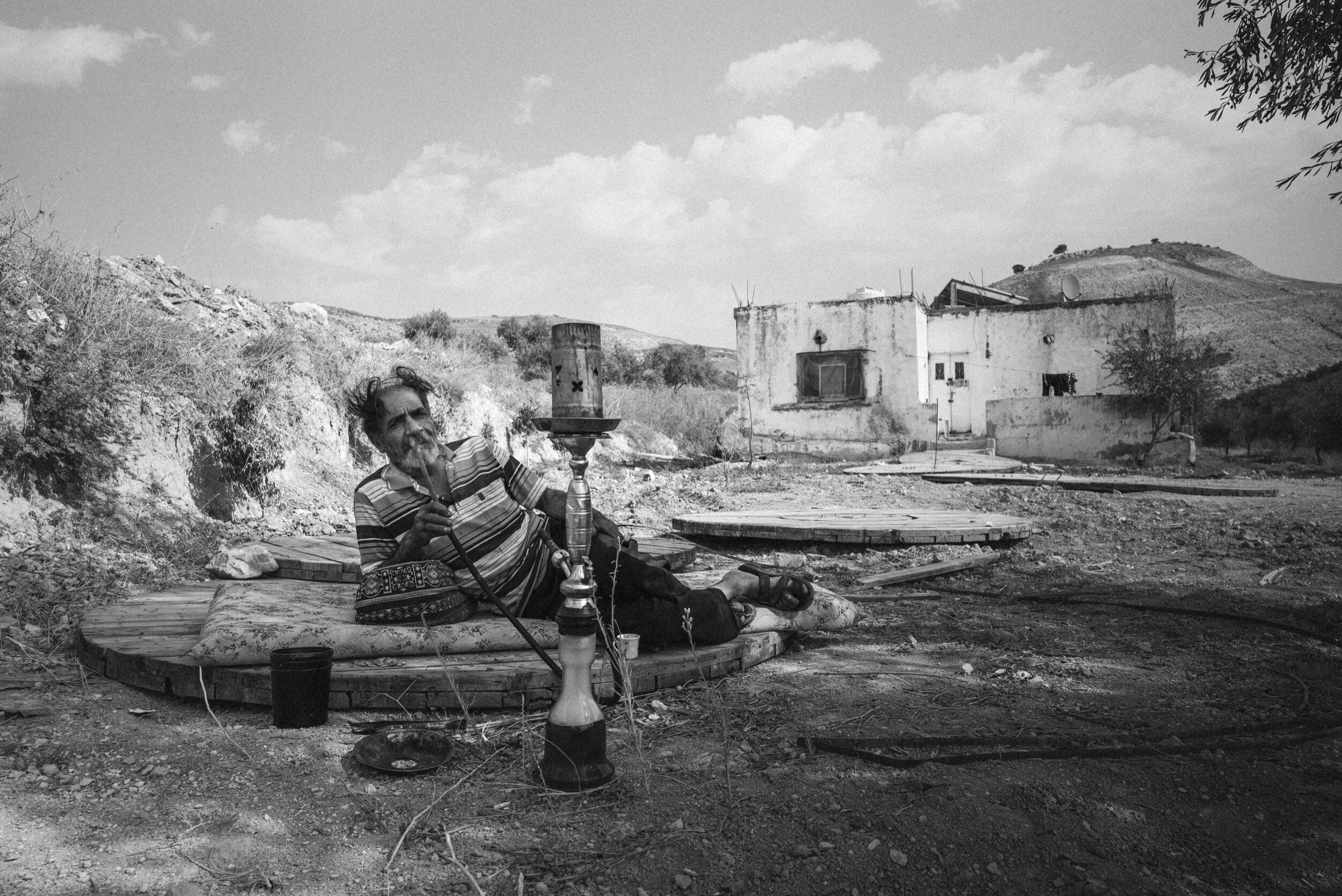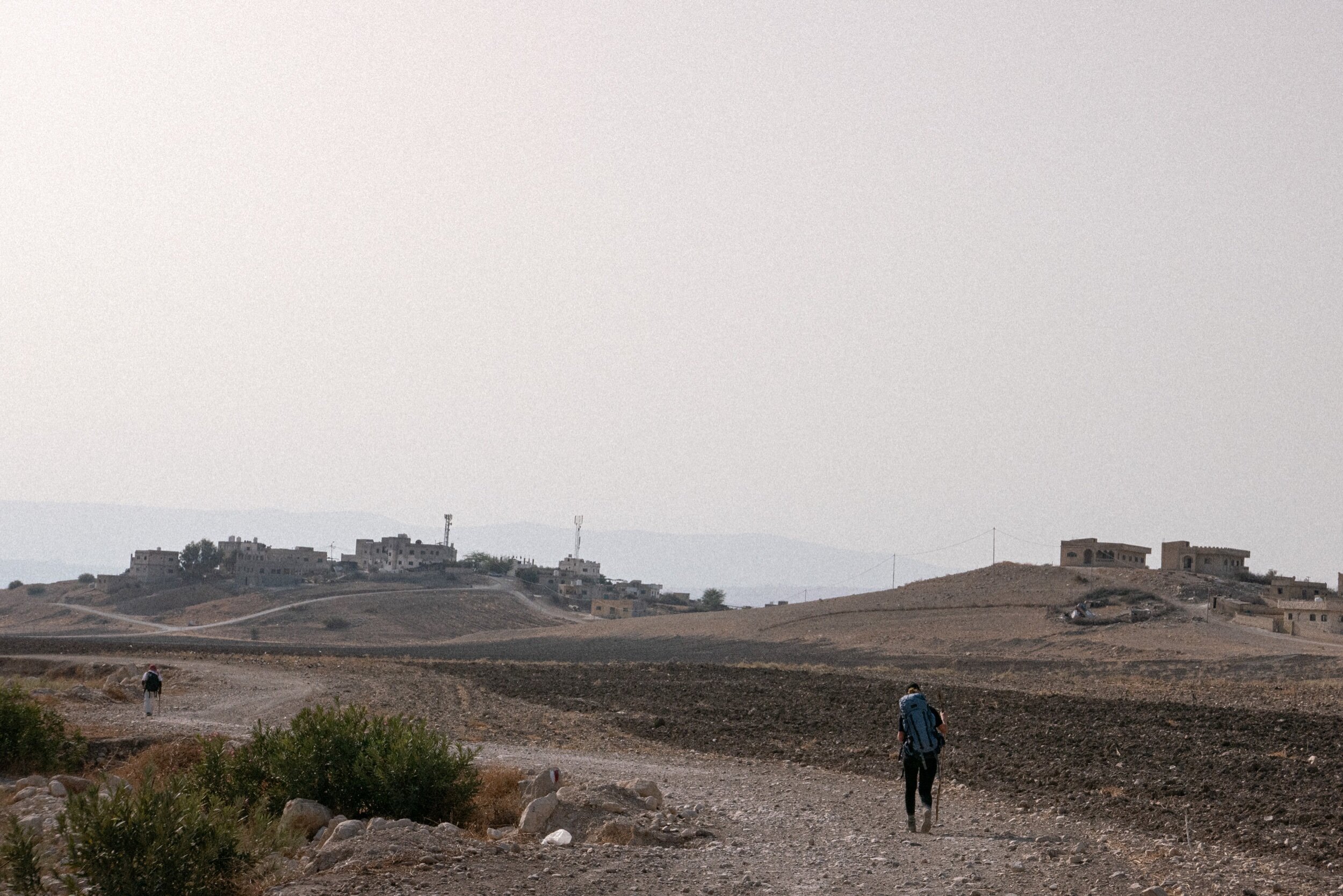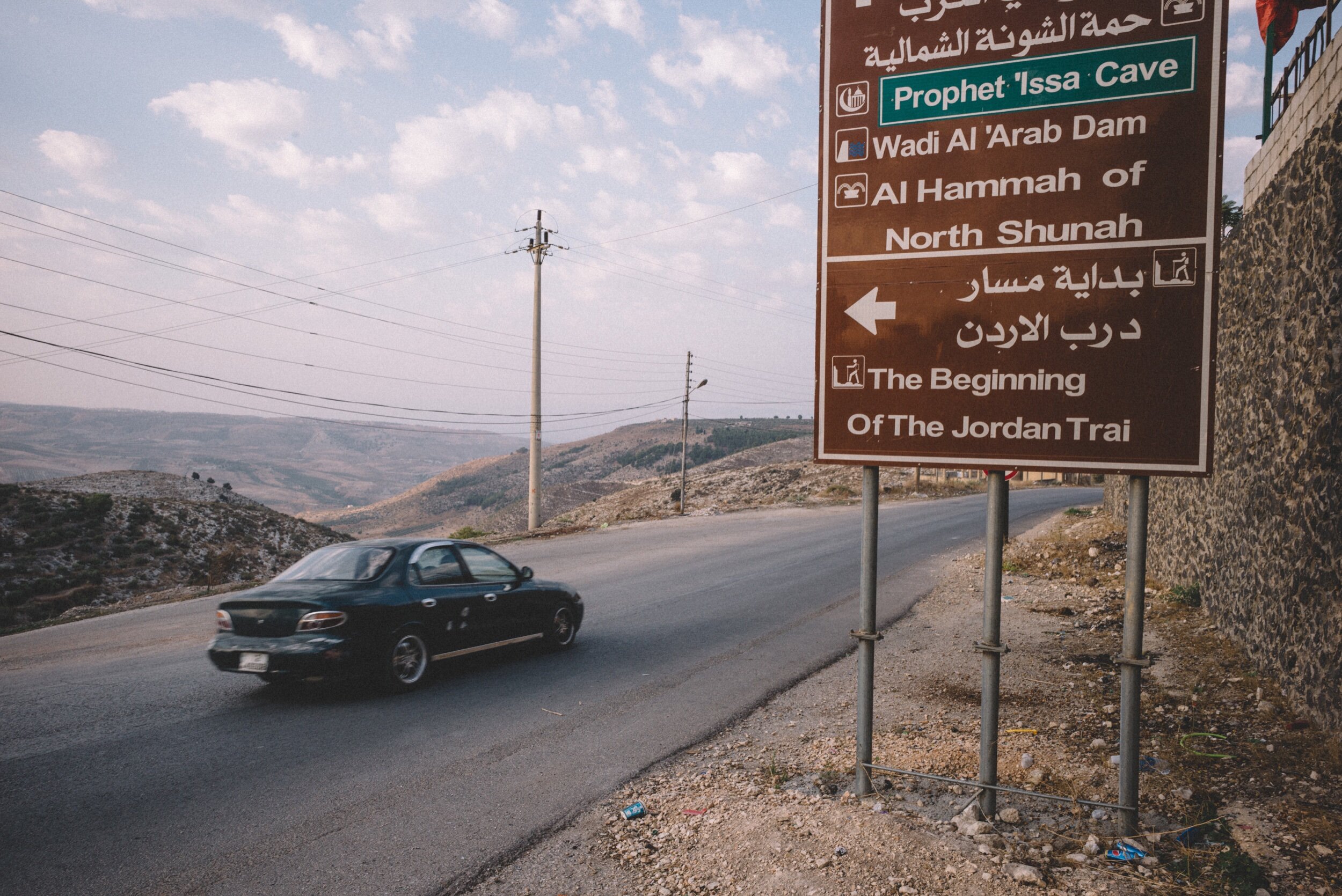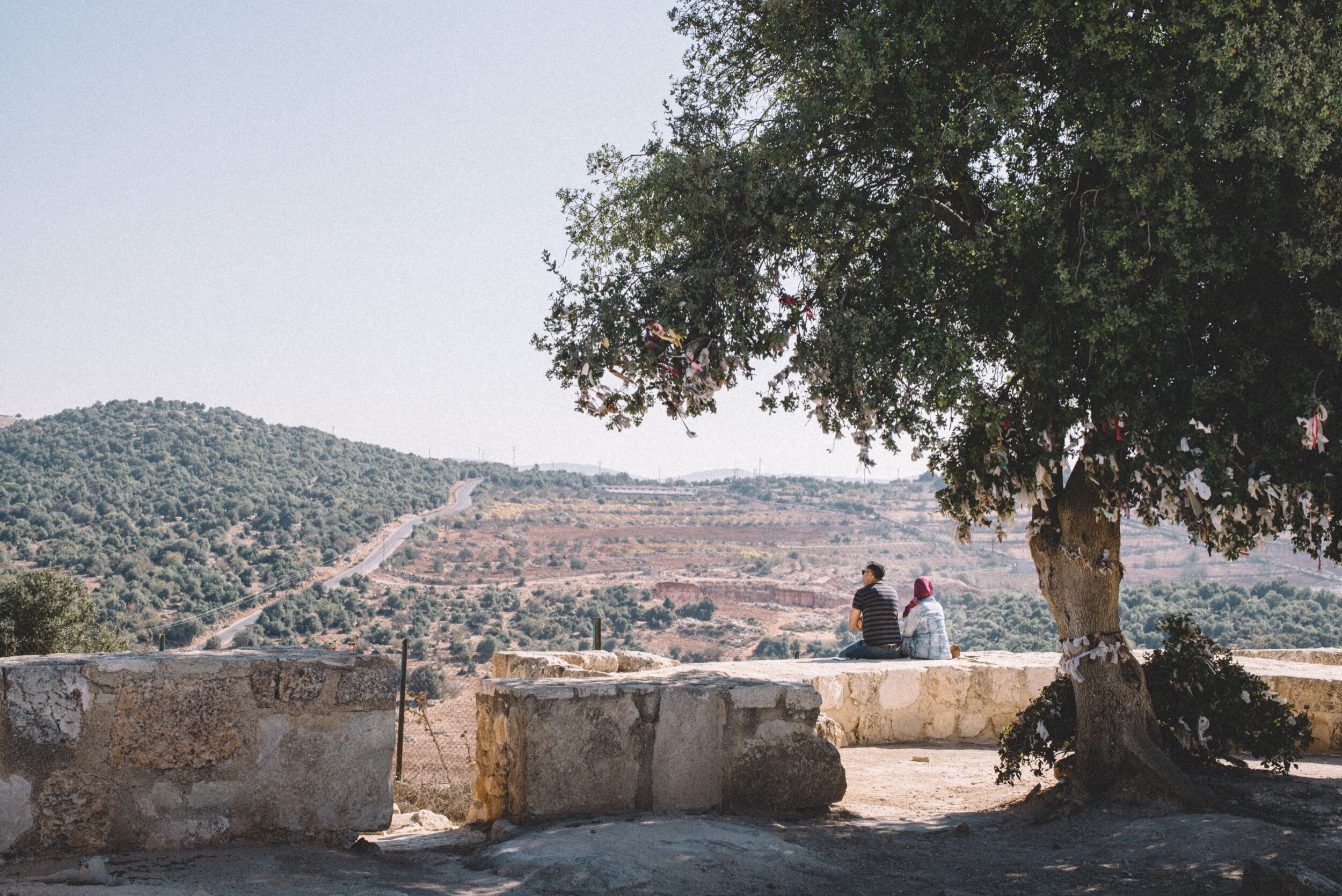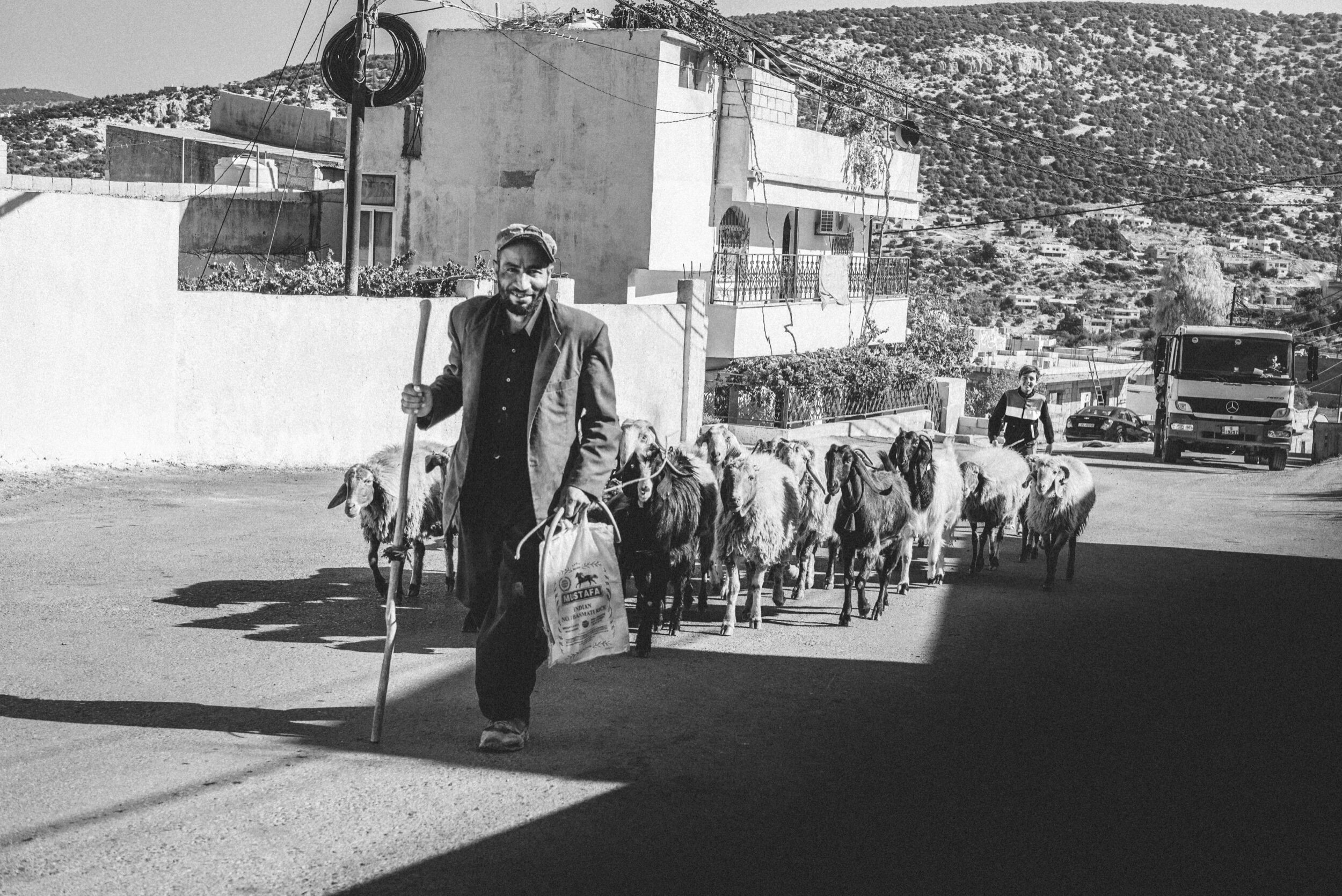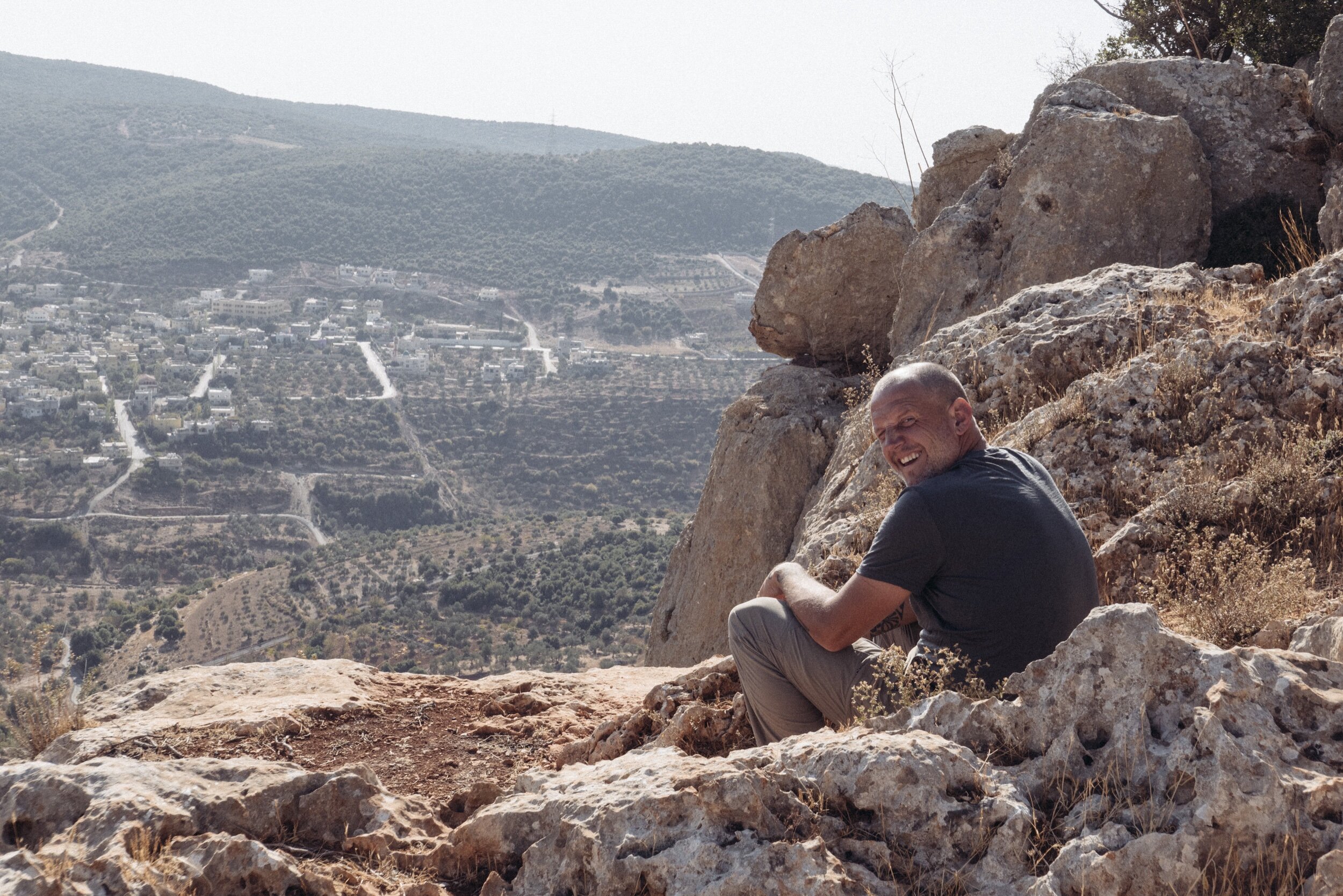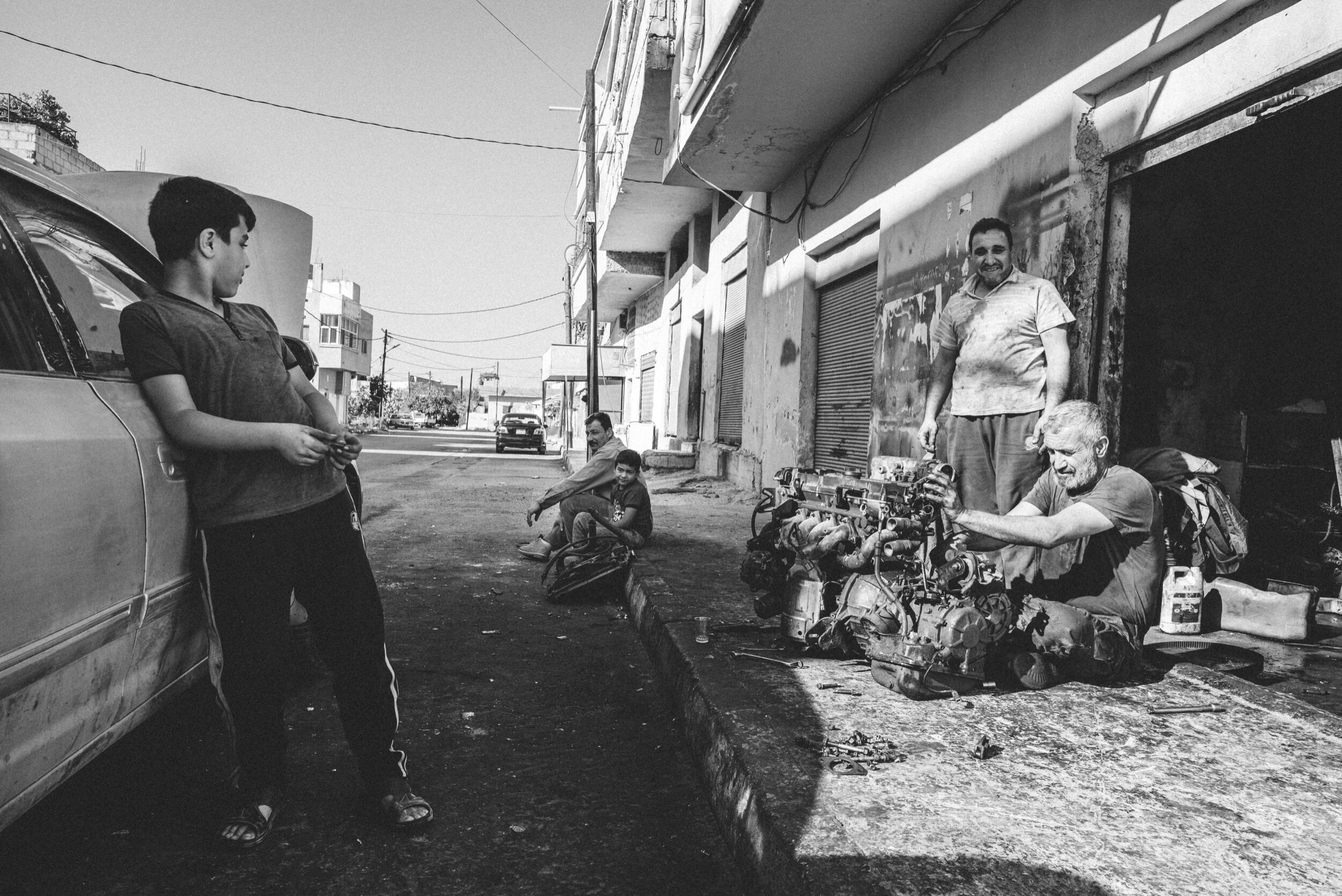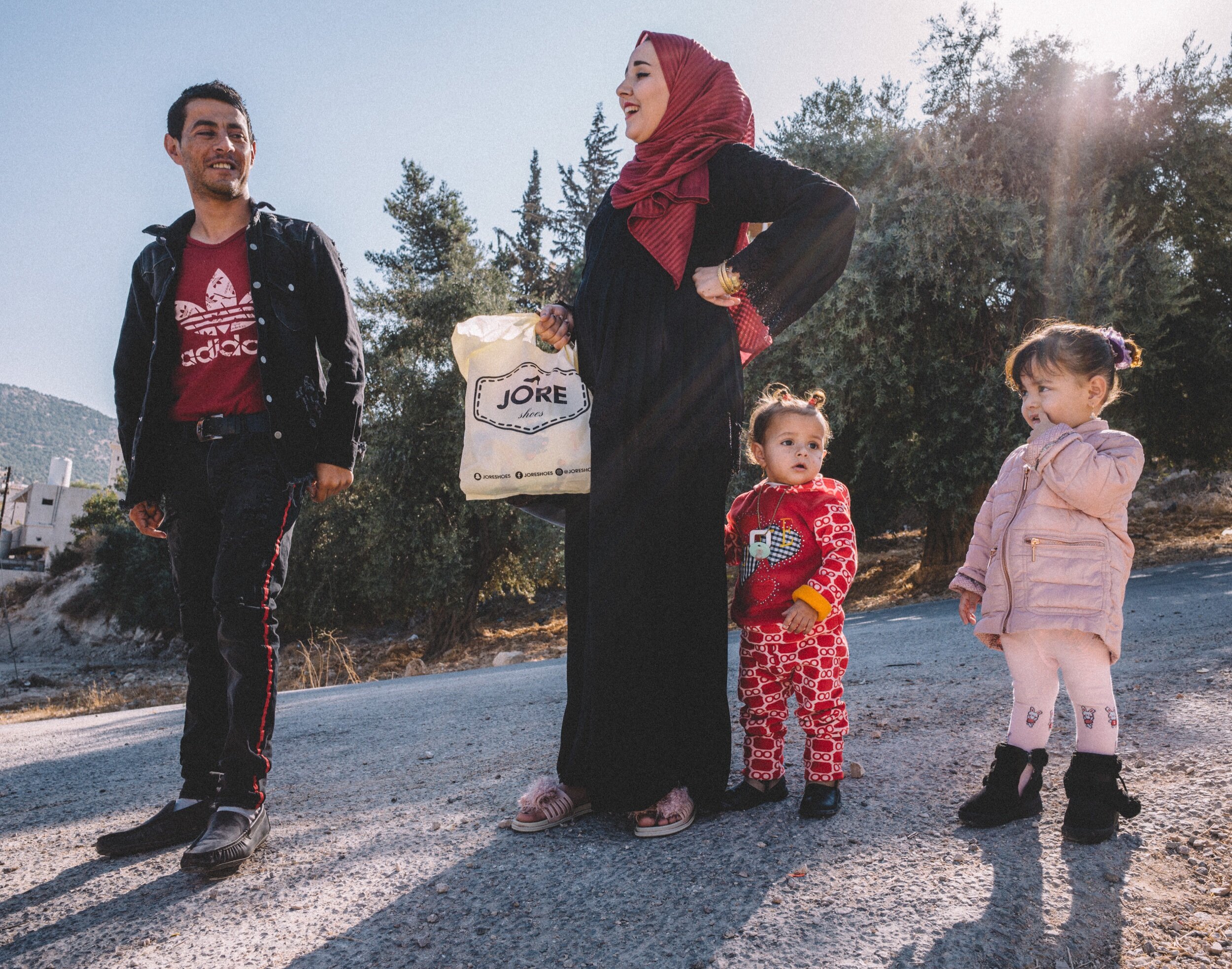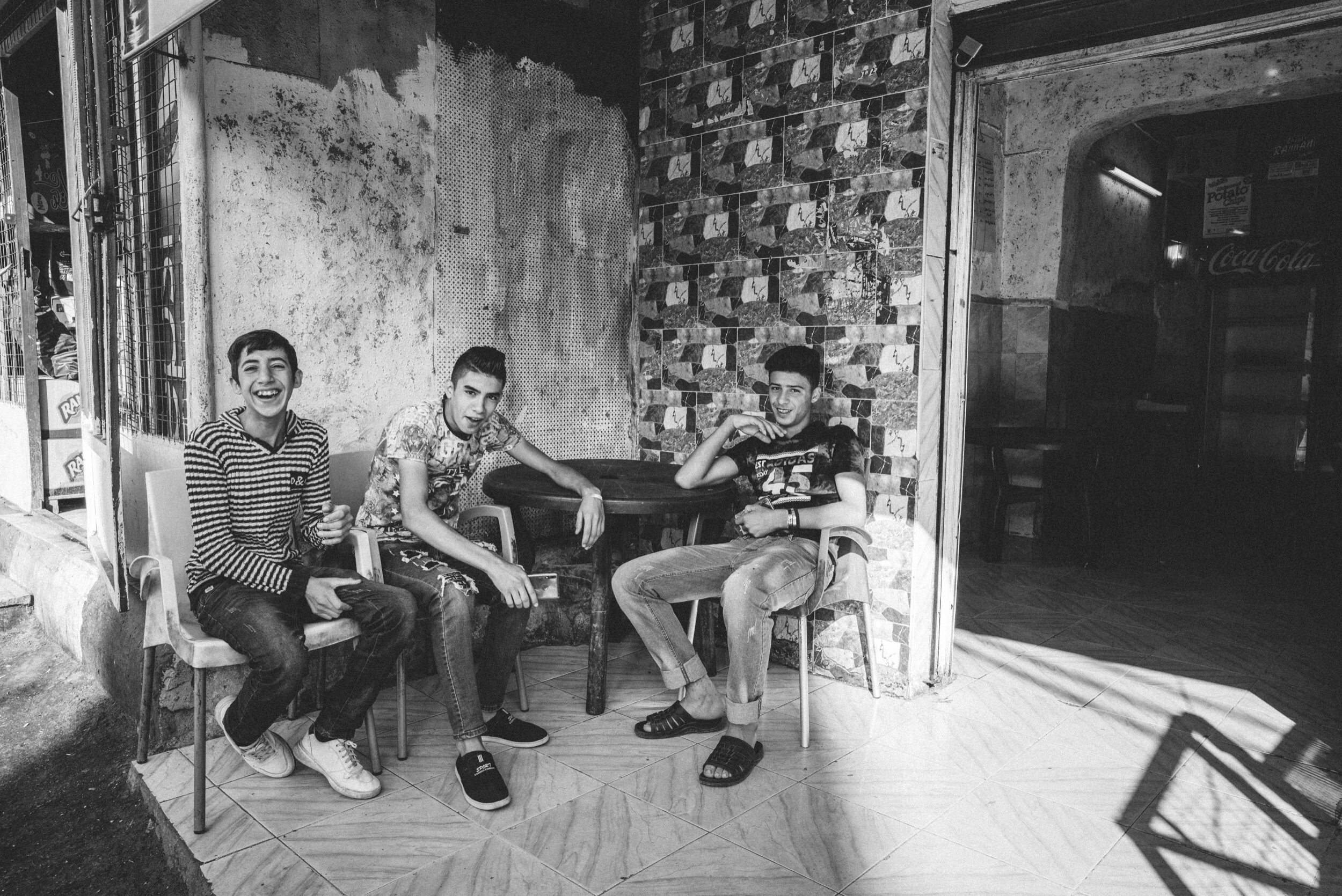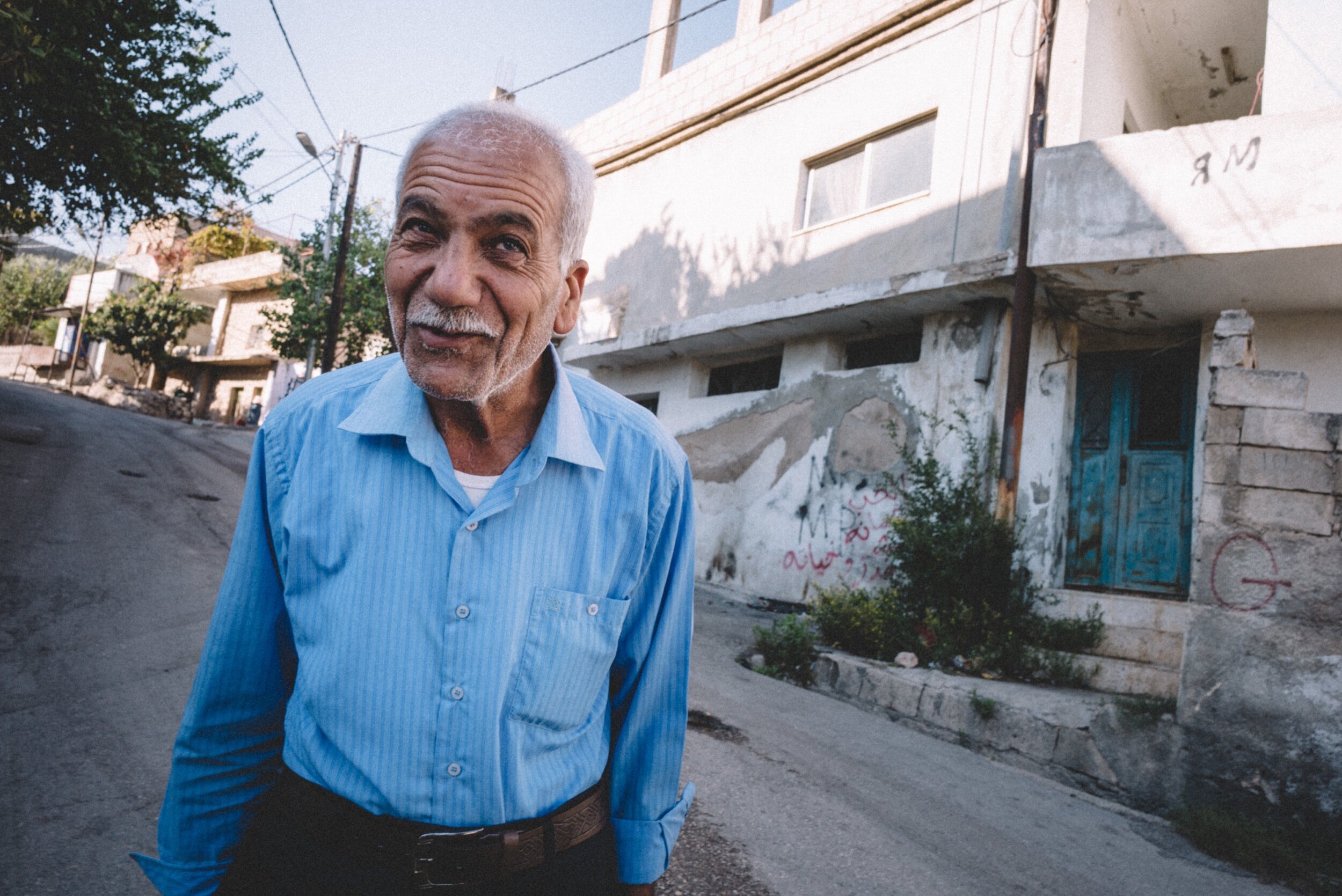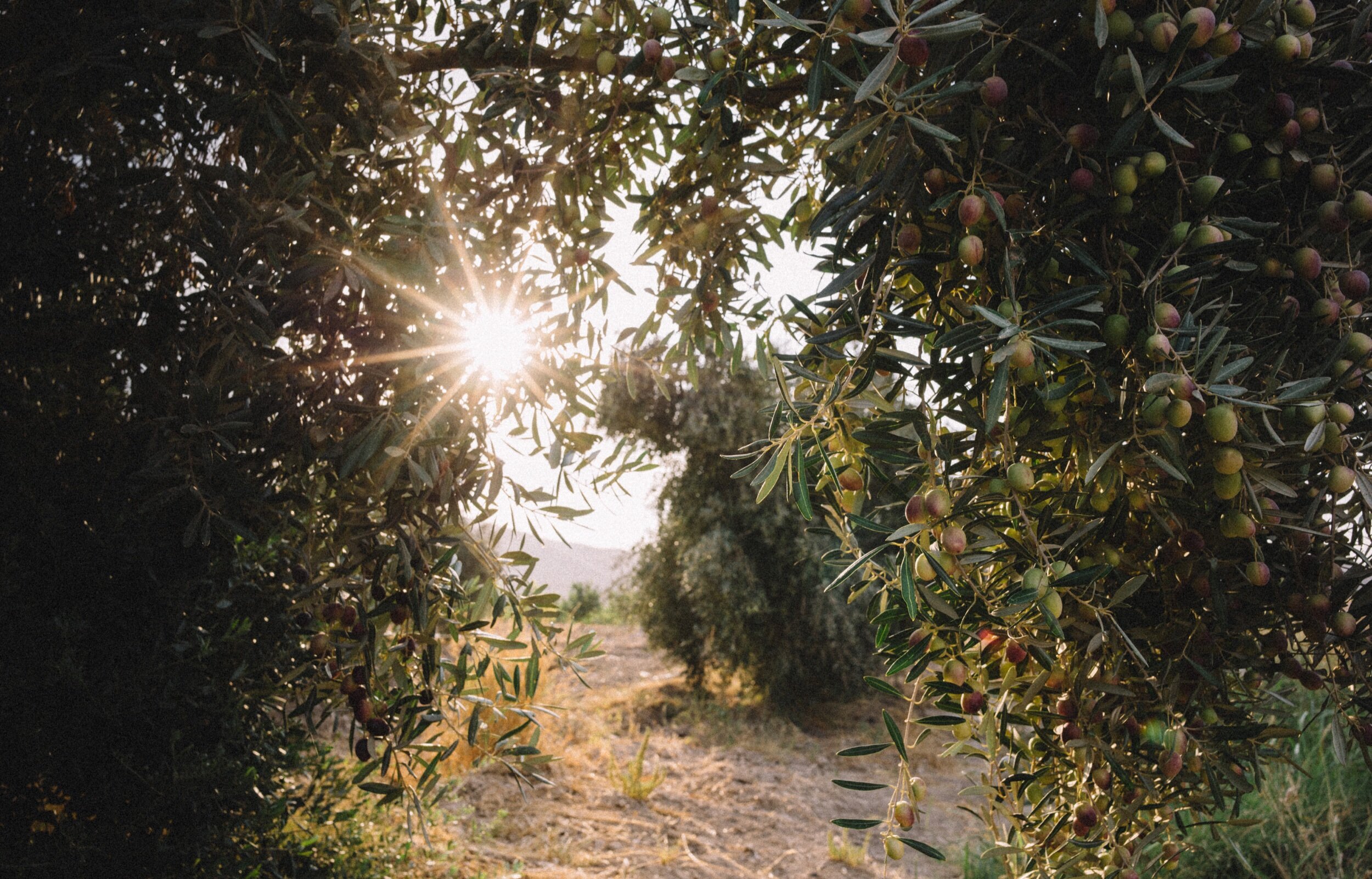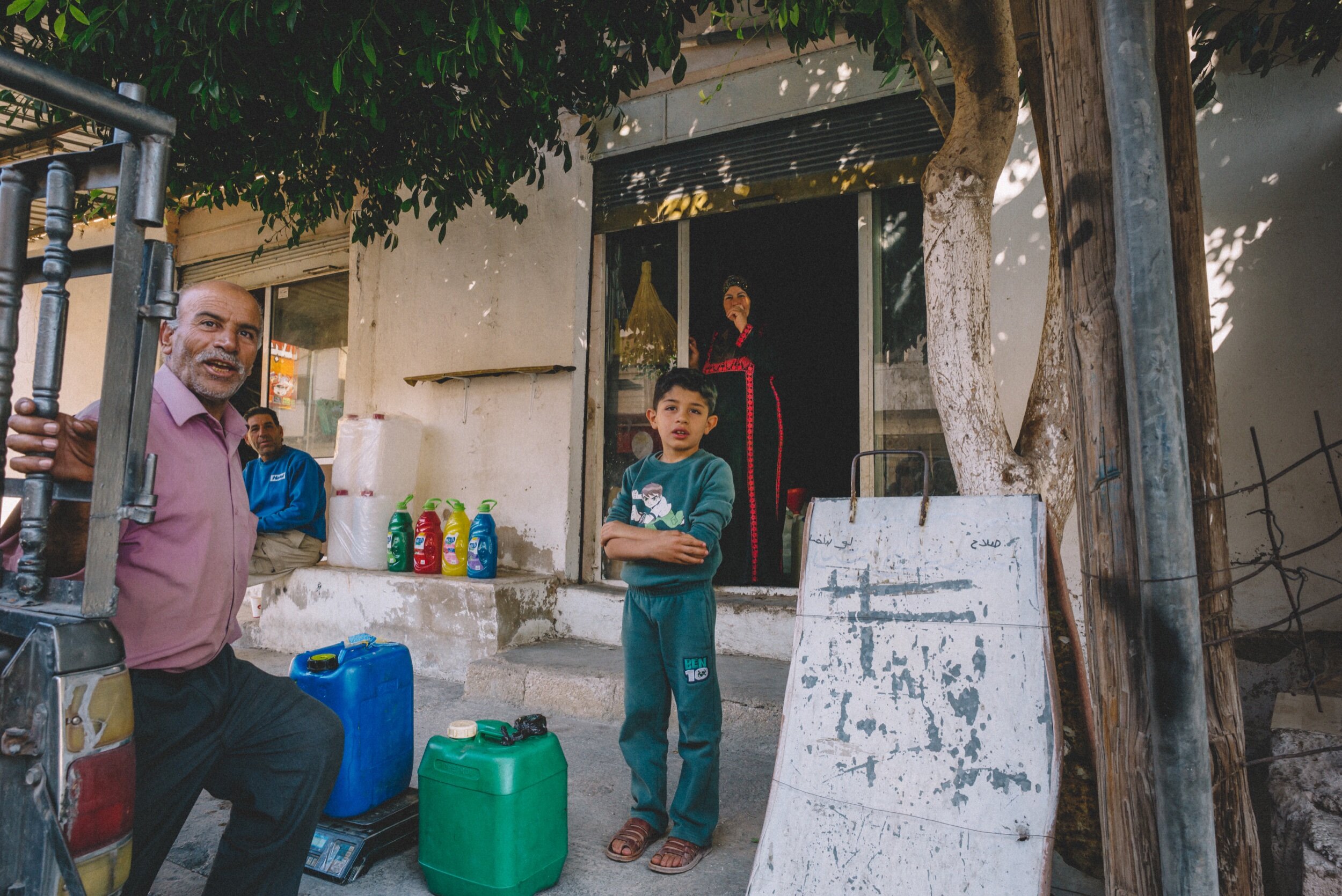If you want to know what kind of a host Eissa Dweekat is, consider the ease with which one appropriates the view from his garden deck. A downsloping driveway leads to his family house, which is multi-storied and built up of neatly cut, rough stones. The path leads to a low, wrought-iron gate, left permanently ajar to the patio. The veranda is at the back of the house, where a wooden pent shields visitors from the wind.In a matter of minutes we have hauled our backpacks from a taxi and dumped them on the cleanly swept tiles. Our bodies slowly sink into the couch that has been positioned on the veranda’s edge, at an angle that allows the eye to wander outward and keep on going: first, to admire the neatly arranged trees in the orchard, then on down the gentle slopes into shadow-filled plains. Taller hills, and behind those, bouldering mountains stand against the midday sky. In a few days’ time we’ll have met those uplands up close. Knowing that a bed and a shower lie in waiting will prove a huge relief in those times. The family home holds at least ten sleeping places, dispersed over several bedrooms on the top floor of the house.
This is the Ajloun valley. It is where Eissa grows herbs for zat’r and tomatoes to feed his guests. It is where he hikes and deliberates with farmers about maintaining trails along their agricultural land. And oh yeah: up there, the cave that is glaring upwards from a grey-and-brown formation? Jesus’s - the historical figure’s, not this Eissa’s, although he has pioneered the spot as a prime bouldering exercise. Dogs, or coyotes, or cats, are forever barking in the background - ah yes, cats can bark: “Why not? You can bark. None of the animals will hurt people, usually. This is such a small village, there are so few people, the animals are easy too.”
From this place, Eissa has been involved with the Jordan Trail and the Abraham’s Path initiatives. He is a tall, lean man, with a weather-worn sun-kissed face, large hands with agile fingers and a broad grin. His name is listed in moldy trekking guides. Solo travellers, endurance runners, ravenous bikers, out-of-the-box couples and the big commercial tour operators all find their way to him. His guest house serves as a rest-stop as well as a refuge for those who are on longer and more physically demanding travels. Upon our arrival, we are greeted by about a dozen German pensioners who are touring the Ajloun area by bus. They are a bunch of more-than-middle-aged bodies, clad in wind-resistant, exuberantly colored outfits and they happily tell us to take whatever is left of their lunch, flatbreads heavily lathered with oil and hummus. We don’t say no. A retired accountant holds up one of the backpacks we’ve dropped to the floor. “All we did was get out of the bus this morning. And we walked, did we! You don’t use poles, do you? Here, have a napkin.”
The Jordanian bus driver who brought the Germans to Eissa’s house sits on one of the plastic garden chairs on the patio. With a flick of his hand (a cigarette is wedged between his fingers), tea and water appear on the low table that sits between us.
Trek notes: November 9, 2019.
“So to your right, you can make out: the Jordan Valley, the Israel border, Palestine.” For many hours this is our view, as we make our way across stubbornly rising hills
We started from Um Qais, an ancient ruins site in the country’s northern section of Ajloun. The place, which to the Romans used to be known as the Decapolis, has been continuously inhabited until halfway into the last century. Its citizens built their own village school, “no money from the government needed”, according to our local guide and four-day companion, Farrah. He’s a local, a young man who knows his way around the Valley for miles in any which direction. He comes highly recommended by our trail manager Eissa.
From the settlement, one can see Syria, Israel and Palestine and even a Lebanon mountain top on a clear day. “That’s a view that doesn’t attract many tourists to this part of the country anymore”, says Farrah. “People become scared if maybe they will see the war from here.” We take some time to wander around the ancient site. In the distance and the early morning light we catch a glimpse of the Sea of Galilee.
Trek notes: November 10, 2019.
While we saw two Ibrahims on our first hike through this region, we have no such luck between Ziglab and Beit Idis. We actually didn’t even see many people at all after we’ve moved on from a cake and coca-cola break at the Greco-Roman Pella ruins. The rocky agricultural lands on the steep hillsides are laid thick with hay.In the orchards below, people were busy picking the prime olives from low trees. In the uplands, the season seemed to have gone and not much life stirred the ways of our trek. We came across dead things - an exhausted land, a dead dog, a dead snake.
When we took a sharp turn in the last kilometers of the day, we looked straight into the carcass of a dead cow. The animals’ bodies rot quickly in the scorching heat - it’s 30 plus degrees Celsius in early November - and the sun bakes whatever is left. It’s not a pleasant sight. Or a pleasant smell, we learned before we were even close at all. We held our T-shirts up to our noses and mouths.If there is one thing I get to advise or wish for fellow hikers in the Ajloun, it’s that they pray they won’t run into a dead cow. Or at least, not too many.
Trek notes: November 11, 2019.
Two anonymous Ibrahims today, during our walk in the Zubia Wadi and Birqish natural reserve, one of two protected areas in the Ajloun district. We came across teenager-Ibrahim and his friend Mahmout in the thickly forested wadi where, a few meters from the trail and obscured from view by branches, they were attempting to cut into an oak tree. As the wade is part of the natural reserve, logging is illegal. Both boys were well aware and as such were not keen to come in front of Daniëls camera at all.“They are afraid the police will find them through the picture”, Farrah said, even though he tried to coax them. “They use the wood to warm their homes, I don’t want to scare them too much. It feels as if they need it.”
When we return to Eissa’s house, which is located more or less on this trail section’s two-thirds mark, our host’s cousin Abdullah nods knowingly. His face and hands, which seem to be slowly sifting the air, echo Farrah’s sad understanding of the loggers’ situation. “It’s the law, but these are poor people who cannot afford to buy charcoal or other fuel - it’s a problem for them, because it can get cold around here.” But the people are also smart, Abdullah confides: he explains the people’s tactics to evade the law by exploiting one significant loophole. “People are allowed to collect dead branches from the forests. You know, when they die, you can pick them up.” And so, people will sneak into the woods at night. “They will cut off the wood. And then they leave it outside for awhile. They know where it is lying on the ground, so later they can come back and pretend they just found the timber.”
There is now a new kind of fuel in the Ajloun area, which has a lot of olive groves and cold presses. The left-over olive pulp from the pressing methods “burns very well”, says Abdullah. And it is cheap. “But it produces a lot of smoke, thick smoke. So again, that is also not good.”
Without the picture and commentary from the tight-lipped boys we resumed our walk in Birqish that afternoon. We continued the trail, which brought us along Roman burial caves and ruins, including a pre-historic bath house, now empty of water. It was overgrown by grasses and moss.This is where we found ourselves watched closely, awkwardly, by a foursome of middle-aged men. Dust and earth were stuck to their sweaters in patches. Three of them were wearing heavy-duty workers’ gloves. The quartet stood over a patch of land, leaning in. They were craning their necks as we approached, skipping along the limestone steps of the communal baths. As we sat down on the ancient steps for a break. Farrah motioned to Daniël. “Best put the camera away now too, these men are working. They won’t appreciate being documented. Treasure-hunting is also forbidden.”
Eissa, who is putting before us his familiar mint-and-lemon juice, something we crave during the day, nods. Local rumour has it that there is gold to be found amongst the ruins. It is supposed to be the government’s work to excavate the sites, he tells us when we. “The excavation was never done properly and now people around here think they can still find treasures to keep. Or to sell, of course.”
Trek notes: November 12, 2019.
On the fourth and last day hiking - direction Ajloun Castle - we meet Mohammed Zeitoun, working in an olive grove. Daniël admires his hat. Mohammed speaks a little English from having spent some time in Turkey for work. He lived in Istanbul to make a living in the clothes sweat industry but moved back to be with his family’s olive trees.
Mohammed smiles broadly when we tell him why we’re looking for Ibrahim. “Ah, but you call him Abraham. We admire that name very much around here, we are all his sons, his people. But nowadays people often choose different names. They call their children after famous actors or actresses.” Times change, we agree with each other. We have to decline gentle Mohammed’s offer for tea. We haven’t walked enough to warrant a break if we are ever to finish this succession of hiking days.








